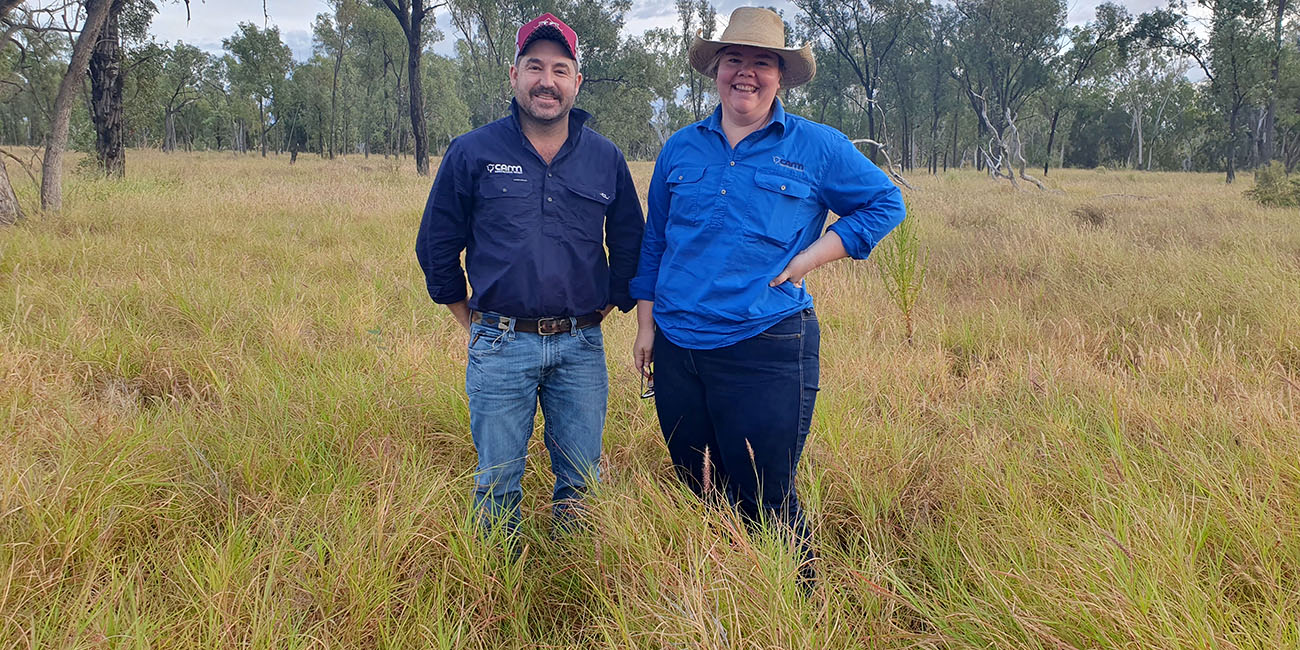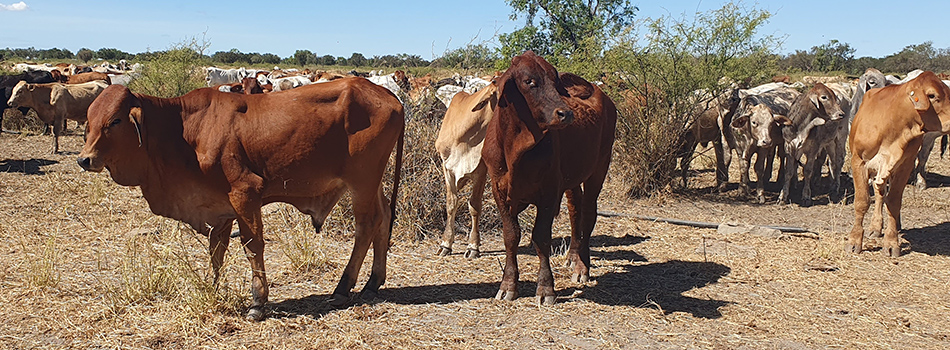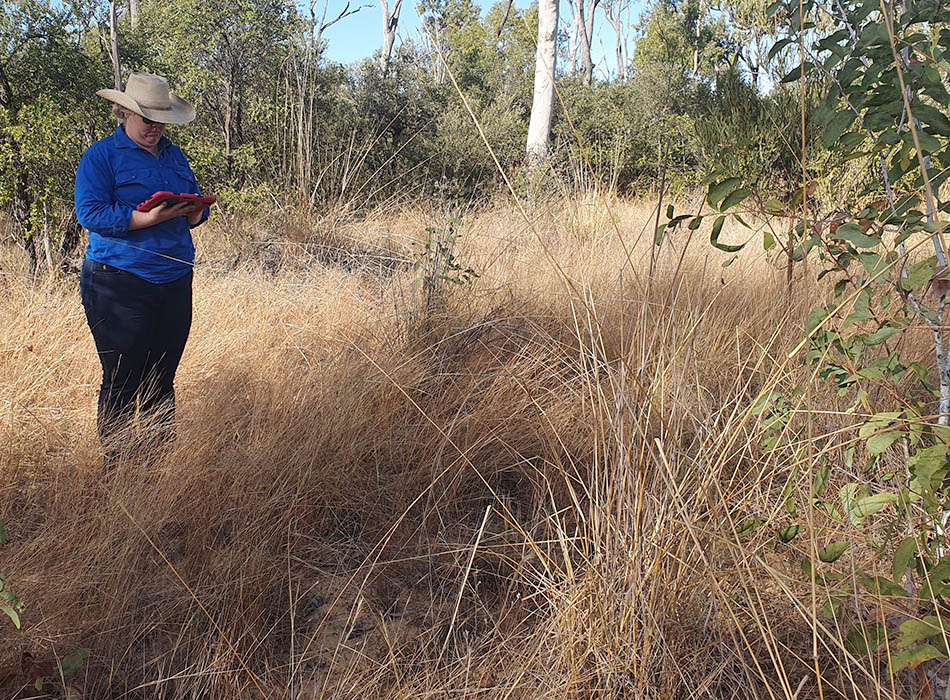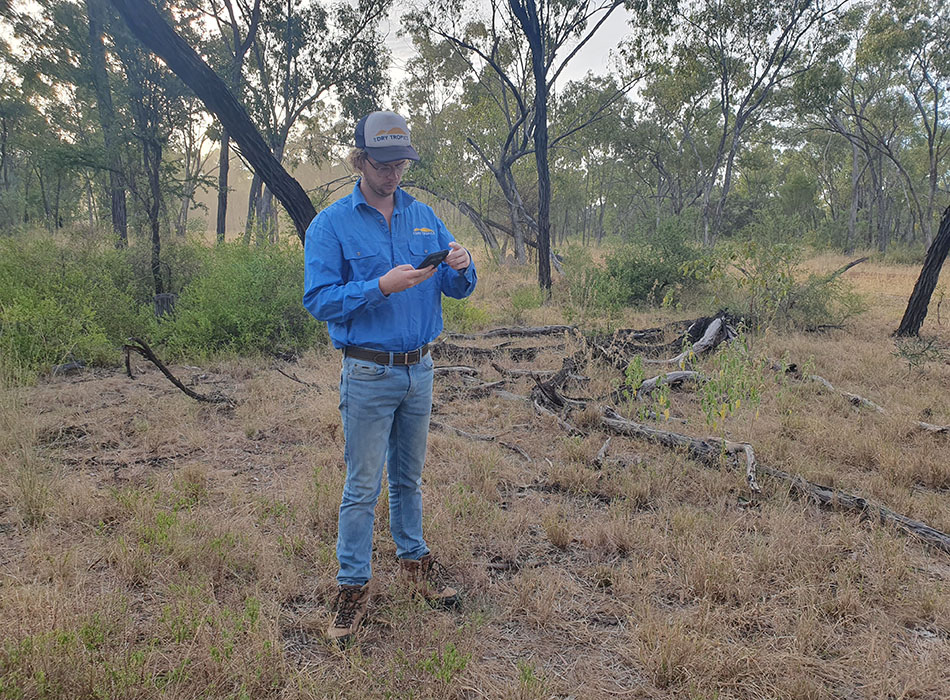Big operators also appreciate GRASS program’s record-keeping
CEO Bryce Camm and Cattle and Farm Analyst Emily Schramm from the Camm Group inspect pastures across the Northern Group of properties.
Bryce Camm was a dinkum bush kid who grew up on Natal Downs south of Charters Towers… riding horses, chasing cows and enjoying nature.
As for his parents’ grazing business, he remembers a crew of eight was employed to maintain the 55,000ha family property.
These days, as CEO of the Camm Agricultural Group, he oversees operations on diverse properties across three groups – Northern, Central and Southern.
The numbers are huge — 450,000ha (more than a million acres) in the Northern Group (Natal Downs, Longton and Narellan), running 45,000 head, mostly breeders.
In the past five years, improvements have centred on fencing, more than 100kms of it, and, to support 100 new paddocks just on Natal Downs, 70 watering points have been installed.
There’s still a crew of eight, but it’s looking after three properties now covering eight times the area and four times as many cattle.
The Central Group — Picardy, Nungaroo and Marracoonda — is in the Moranbah-Clermont district. They are the fattening properties.
And the Southern Group — Wonga Plains, Morocco and Melrose — spread across country from Dalby to Kingaroy is a mix of cattle and grain growing servicing the feedlot at Wonga Plains.
Bryce’s aim is that modernisation — of equipment, systems and methods — will bring increased efficiency, productivity and, with the implementation of improved grazing practices, improved sustainability.
To help inform land management decisions, Camm Agricultural Group’s Cattle and Farm Analyst Emily Schramm is establishing a monitoring program. She approached NQ Dry Tropics about the Grazing Resilience and Sustainable Solutions (GRASS) program, which supports Burdekin graziers to classify and protect land condition.
With Senior NQ Dry Tropics Senior Grazing Field Officer Carleigh Drew and Grazing Field Officer Cameron Sims, they selected 22 monitoring sites across the three Northern group properties.
The duo also completed GRASS plans at Nungaroo and Marracoonda in the Camm Group’s Central Queensland Group, establishing seven monitoring sites across those properties.
The initial data collected established a baseline across the three properties and it was the starting point for the GRASS plan for each property.
Bryce said the GRASS project offered his business the groundwork on which to develop comprehensive grazing and resource management plans.
“Funding is important, but it’s definitely not the main point of attraction for us,” Bryce said.
“It’s about ensuring compliance with the reef regulations, yes, but it’s also about being seen to be actively improving the condition of the land.
“It’s about confirming the legitimacy of how we’re operating and validating our own plans.”
Bryce said having solid groundcover data, easily confirmed in each paddock, was crucial.
He said earlier data from satellite monitoring and ground-level observations had sometimes differed so much, each dataset was almost useless.
“Having those monitoring points will mean we can build a useful data bank and be able to gauge progress as well as make sound management decisions.
“It will bring a bit more science and rigour to our land management but observation — of land, pasture and cattle — that will always be the biggest part of making GLM decisions. Always.”
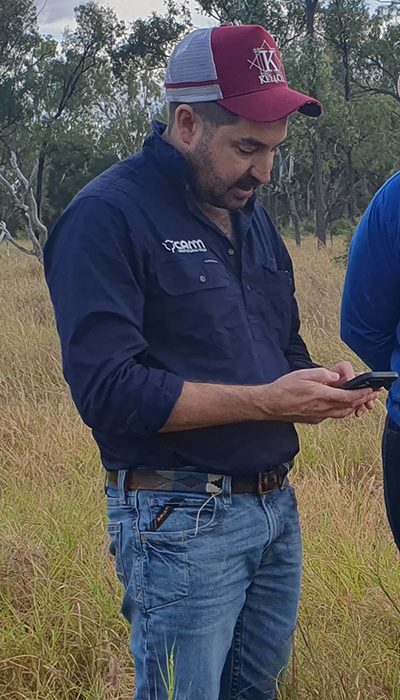
The GRASS plans integrate with other planning in the group, including genetic development, aiming for a flatback beast with enough Bos Indicus in the mix to provide resilience, while at the same time producing a superior carcass, particularly from the Wonga Plains feedlot.
Pasture development is also in Bryce’s plans. Pest control — particularly rubber vine and Parkinsonia — is high on the priority list in the north and they’re also seeding pastures, trying to infuse more legumes into the mix.
Bryce said he had no desire to be at the forefront of technology in grazing management, rather he wanted to be one step back from the leading edge, implementing tried and true methods to improve sustainability.
But he definitely wanted to be at the forefront when it came to advocacy for the industry as a whole.
“It’s important we’re playing our part in that,” Bryce said.
Camm Agricultural Group weaners in the paddock.
Emily Schramm at one of the monitoring points established as part of the GRASS plans across five properties in the Camm Group.
Grazing Field Officer Cameron Sims.

